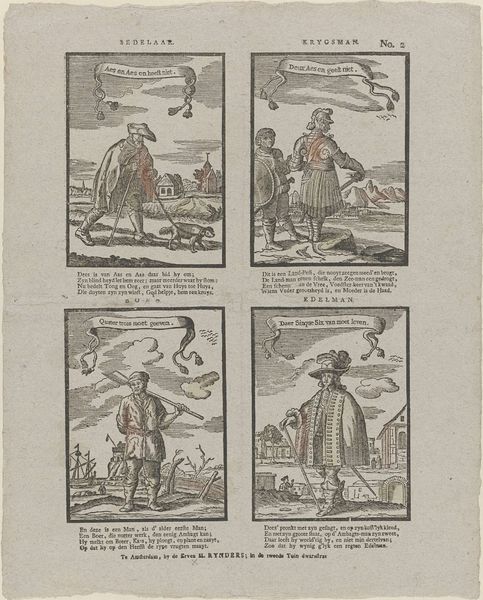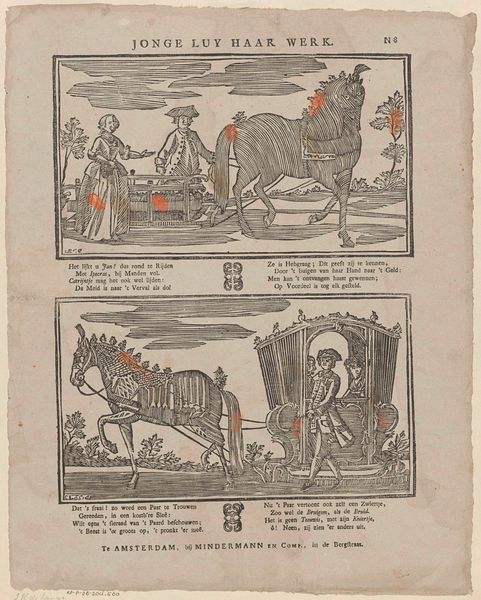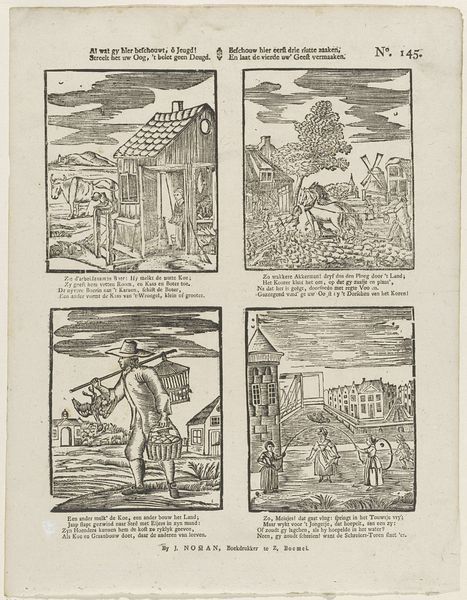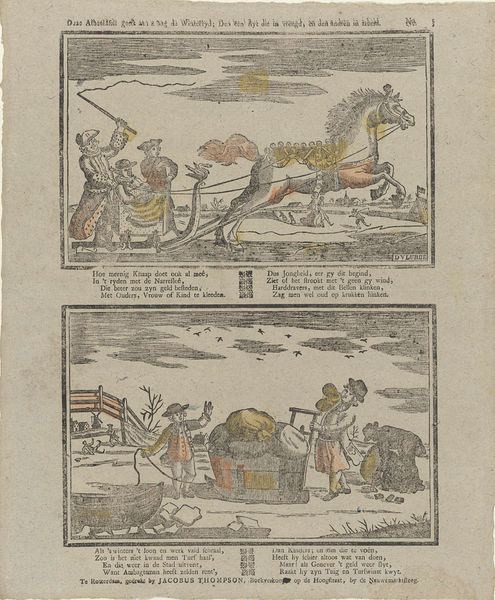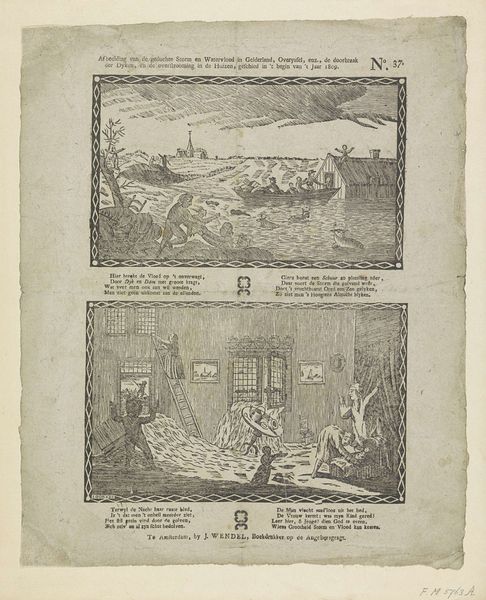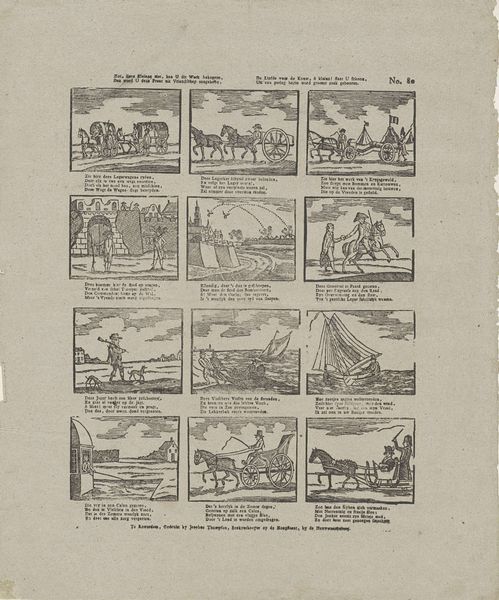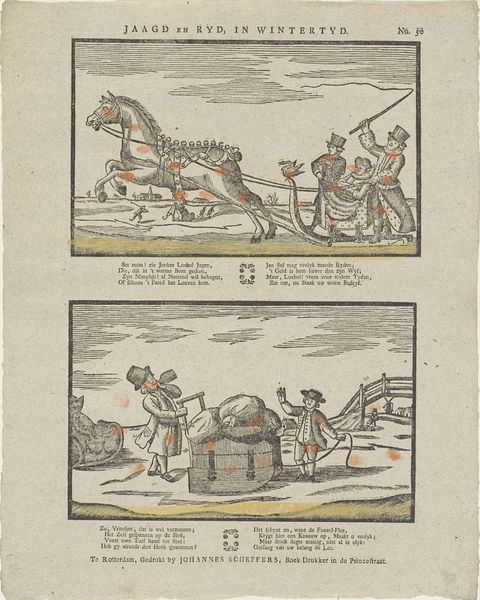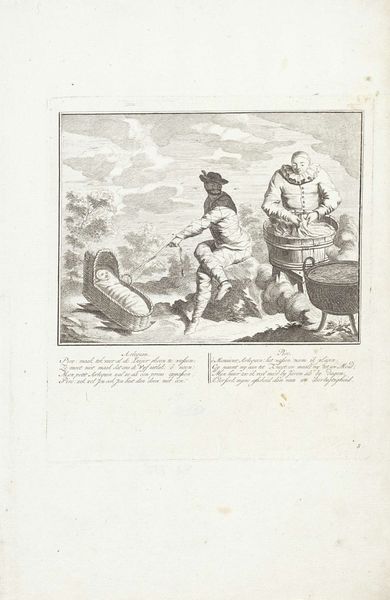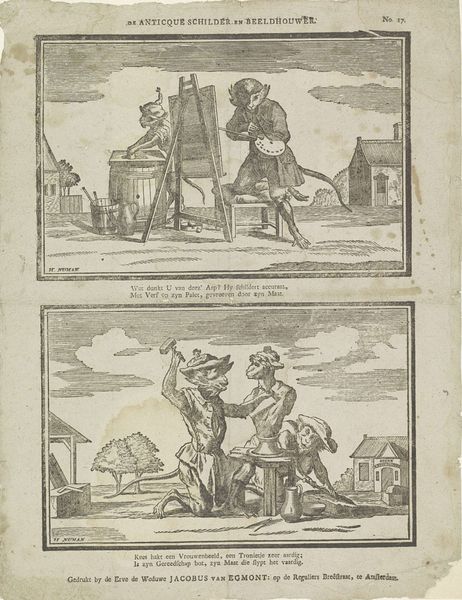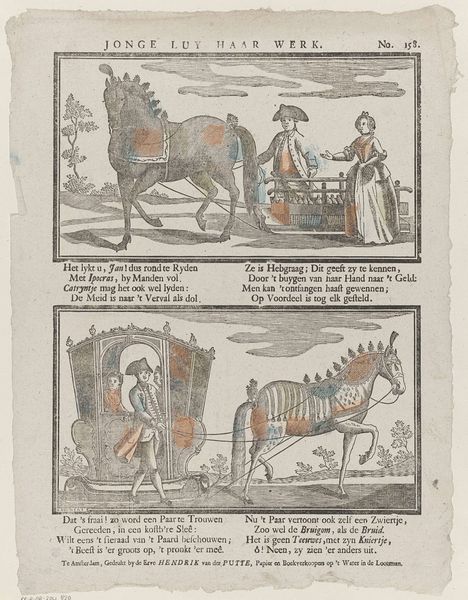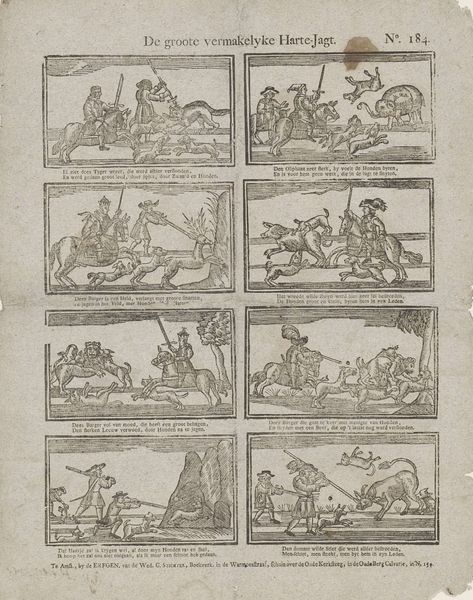
Dimensions: height 412 mm, width 305 mm
Copyright: Rijks Museum: Open Domain
Curator: This engaging print, dating from somewhere between 1782 and 1793, is entitled "In winter-tyd,, men jaagt en ryd," and is currently held here at the Rijksmuseum. It was created by A. Bouwens and rendered in engraving. Editor: Immediately, I'm struck by how the upper register, with the horse-drawn sleigh, presents such a different feel than the lower scene with figures gathering and moving goods across what I assume is frozen water. It almost feels like two separate images hastily conjoined. Curator: Precisely. Bouwens captured scenes of daily life against the backdrop of a Romanticist sensibility. The engraving technique allowed for wide distribution of such imagery, thus playing a crucial role in shaping the perception, particularly, of seasonal change and rural labor amongst different social classes. Editor: I’m interested in this notion of contrasting classes. On top, the leisurely ride suggests privilege, doesn't it? A fur-draped figure sits elegantly as a horse pulls the sled, evoking notions of aristocracy and the culture of conspicuous consumption. Meanwhile, the lower image centers on workers. How does the contrast become a comment on societal disparities in that era? Curator: These winter landscapes have a significant relationship with Dutch identity. Depicting everyday scenarios normalizes the toil of common citizens, offering viewers, noble or otherwise, an intimate look at Dutch life outside courtly settings. Through these romanticized vignettes, labor becomes part of a national visual identity that's very complex. Editor: It’s compelling how art often performs this complex dual function. By presenting imagery reflective of an idealized national character and subtly broadcasting encoded socioeconomic disparities. The work shows not only leisure activities but how economic activities like trade intersected even those "frozen" winter days. Curator: Indeed. I would conclude that it's the careful balancing act of artistic representation versus authentic depiction which underscores the cultural importance of artworks like Bouwens’ print. They're useful as historic document but equally for how such visuals become powerful messaging for shaping ideas of class, work, and culture. Editor: I agree. I see it as revealing how the Romanticized landscape served as a canvas for both escapism and subtle social commentary—reflecting a nuanced picture of Dutch society that rewards continued dialogue even today.
Comments
No comments
Be the first to comment and join the conversation on the ultimate creative platform.
